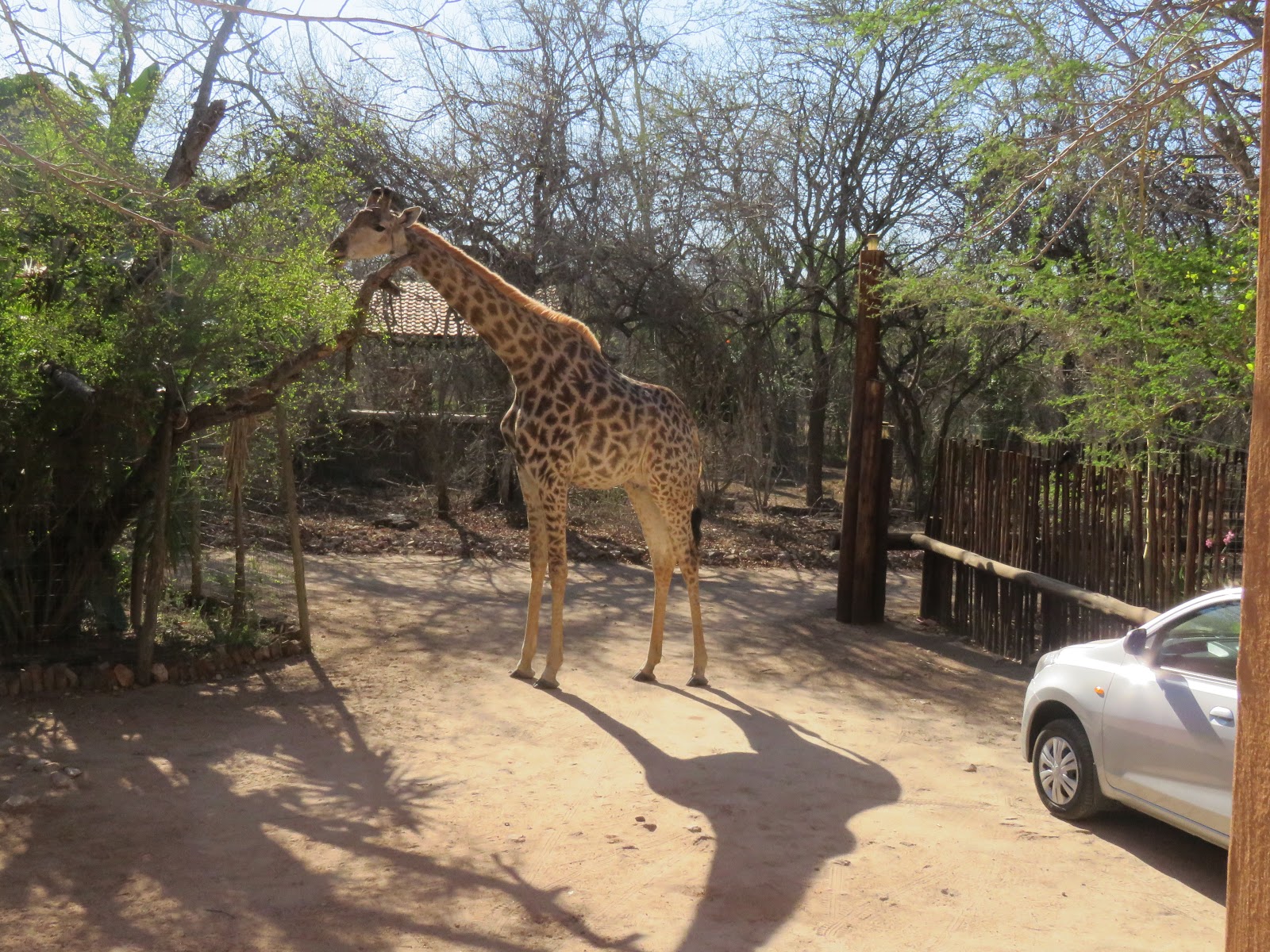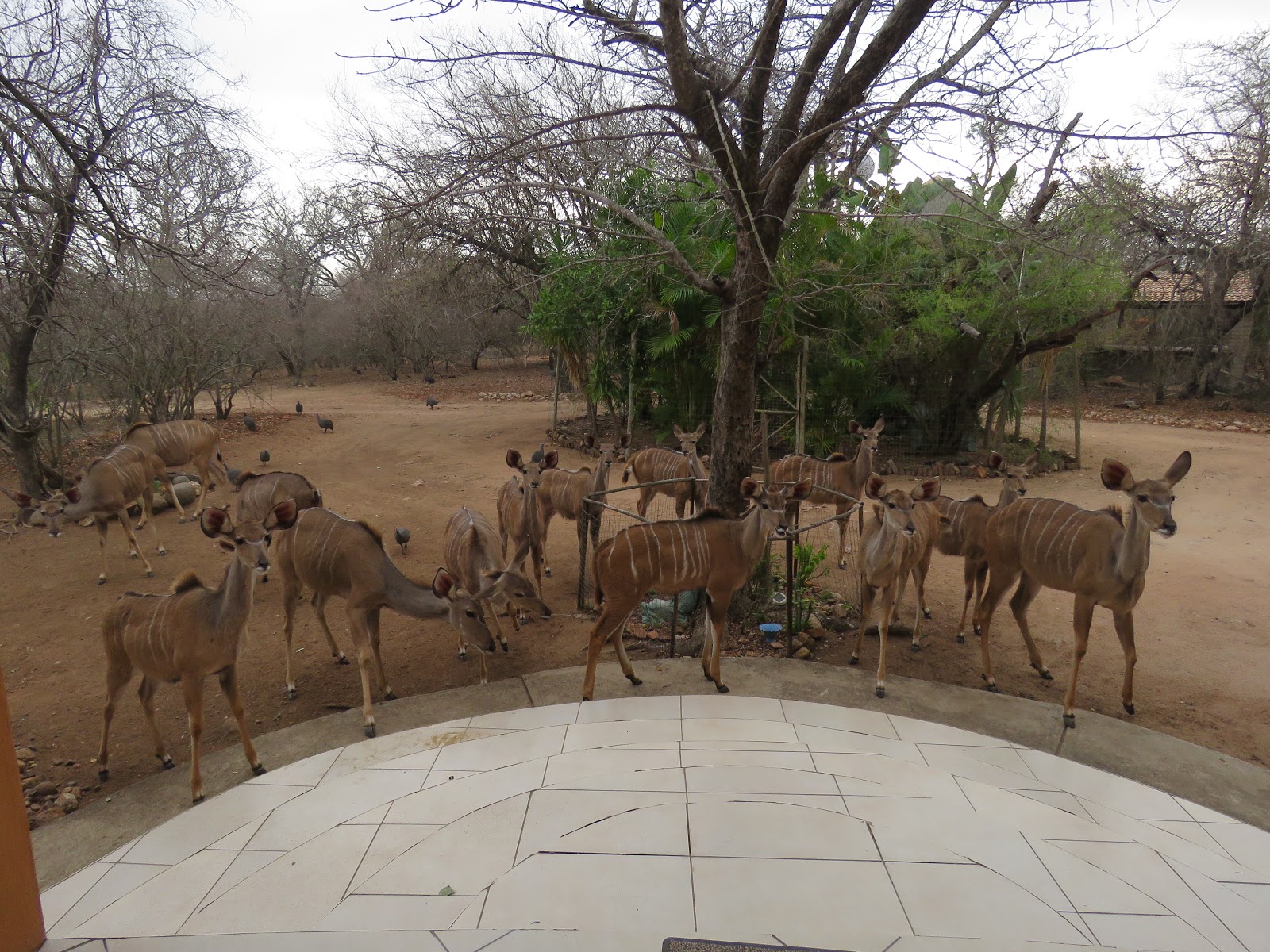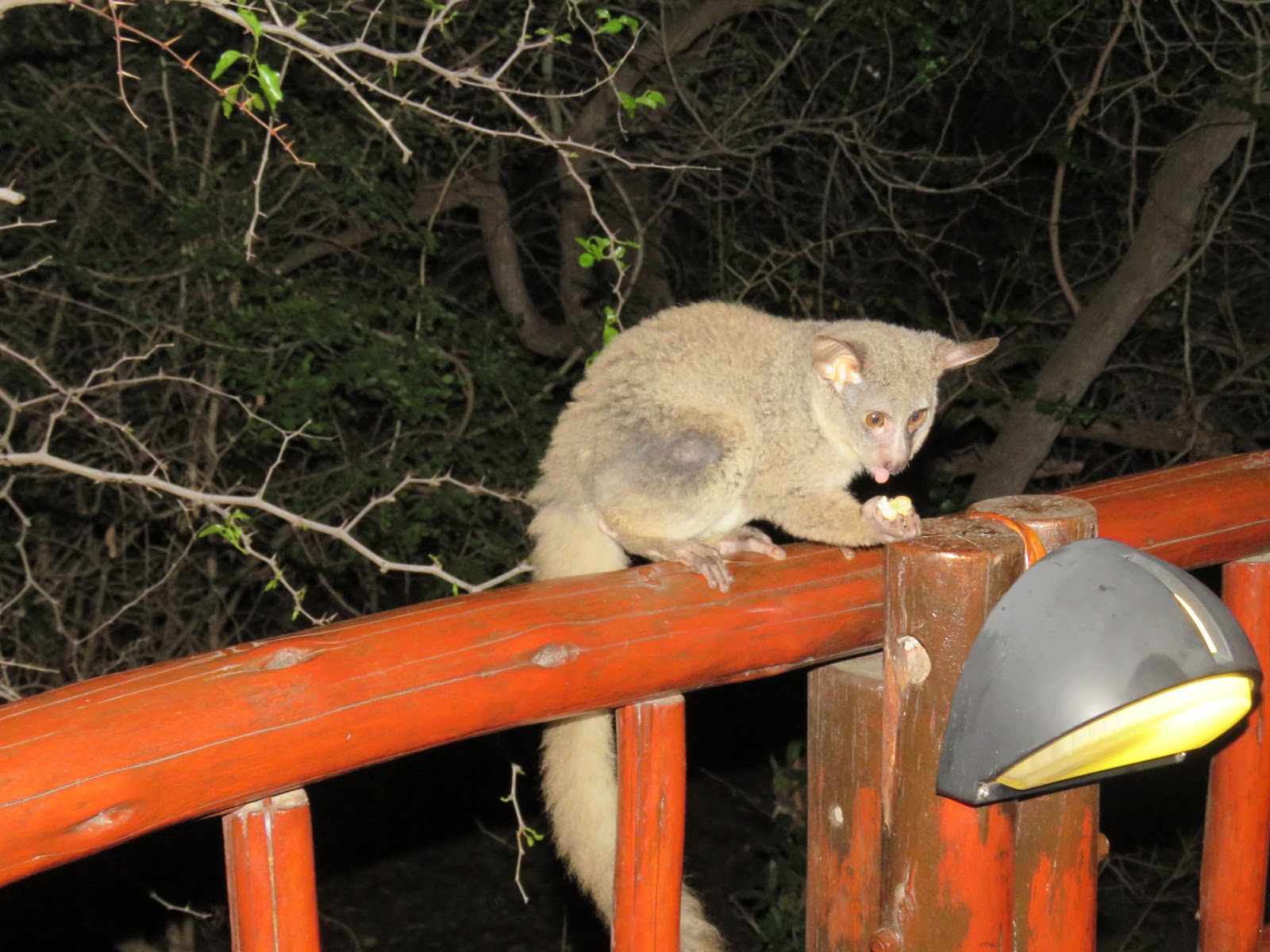 |
| Hornbill sitting near the bench at the overlook at Two Trees, where we always spot wildlife. |
“Sighting of the Day in the Bush”
 |
| Blue starling on the fence between Marloth and Kruger Parks. |
This is one of the most gorgeous mornings we’ve experienced at Marloth Park since we arrived almost seven months ago. No, we haven’t had a lot of visitors so far today with another holiday weekend winding down from lots of tourists resulting in less wildlife stopping by.
The balmy breezes, clear skies and ideal temperatures hovering around 28C (82.4F), couldn’t be more perfect. Of course, we’re bracing ourselves for the African summer and its outrageous heat increasing over the next few months.
 |
| A pair of laughing doves, commonly seen in the parks and in our garden. |
We easily recall the heat when we arrived here in December 2013 which carried through the three months we spent in Marloth Park. Going forward, based on where we’ll be living on the continent, we can expect high humid weather in months to come.
 |
| A pair of hornbills in our birdfeeder which we have to watch closely when nuisance monkeys try to eat the seeds. |
The birds are singing and we appreciate the sounds of the wind whipping through the sekelbos (sickle bush) trees in the bush and the myriad plants on the veranda which include a few varieties of palms and lemongrass.
A few of our favorite bushbucks, warthogs, and mongoose have stopped by this morning along with several appearances of Frank and The Mrs. who let us know they’re looking for seeds. They don’t fly up to the birdfeeder so we drop seeds onto the ground for them, hoping they get a few nibbles before the several dozen helmeted guinea fowl take over.
 |
| Mr. Ostrich and his fluffy feathers. They all look bow-legged. |
Yesterday, we embarked on our usual drive through the park, discovering some of the photos ops we’re sharing here today and tomorrow. Since access to Kruger is challenging again with the holidaymakers, we’ve decided to wait to go until the crowds thin out. Hopefully, there will be a good time to go in the upcoming week or two.
 |
| Moms and babies. |
Last night, again with the exceptionally pleasant weather, we lounged once again on the veranda enjoying a cocktail while waiting to see who’d arrived. For dinner, we had one of our favorite meals, taco salad (minus the floury shell). They don’t sell the packets of seasoning here so I make my own flavorings in order to keep the carb count low. We used wonderful ground tenderloin for the meat.
For the first time in a long time, I added avocado to my salad, a very special treat. They’re commonly found in markets in South Africa but finding them at the correct stage of ripeness is always a challenge. This time it worked out. We purchased three large dark-skinned avos for a total of ZAR 15.90 (US $1.08)
 |
| This tiny baby managed to make it down this steep embankment. |
I recall paying ZAR 44 (US $3) for a single avocado in the US over six years ago before we left. Many food items are expensive here but not produce, beef, pork or chicken. Fish is on the high end along with many packaged good but not all.
 |
| Trunks are so “handy.” |
Tonight, we’ll enjoy our leftovers from last night, making today a very easy day for us. I already chopped the tomatoes, purple onion, olives, and celery and grated the fresh cheddar cheese for Tom. Tonight, I cut up more avocado for my salad. (No cheese for me).
As I’ve continued to avoid all dairy products my gastrointestinal issues are all but gone. How I suffered for 2½ years to now feeling well continues to baffle me. Why didn’t I figure this out sooner?
 |
| Little blue and grey bird, a blue waxbill, near us while we sat on the bench at the overlook. |
I’d read that getting helicobacter pylori which was diagnosed in January 2016 in the Huon Valley in Tasmania, can cause lactose intolerance, why didn’t it ever occur to any of the three doctors I saw for the condition? And most disappointingly to me, why didn’t I figure this out when I’d spent endless hours researching possible solutions?
Well, in any case, I’m thrilled to have finally figured it out and now can live a relatively normal life although I still can’t eat starch, grains, fruit, sugar, and now dairy. What does that leave me?
 |
| A hornbill checking us out, “Got any seeds?” |
I can have any type of animal protein, eggs, butter (no problem with that dairy item in moderation), and non-starchy vegetables. I still can use almond and coconut flours but do so in moderation while I’m attempting to continue to lose a few more kilos (pounds). It’s going well although slowly.
As for lack of calcium, I’m consuming mackerel, sardines, tuna, or salmon daily which are excellent sources of calcium and vitamin D. See this link for details: “Fish with soft bones, such as canned salmon and sardines, are good sources of calcium and vitamin D. Three ounces of sardines, for example, nets you 325mg of calcium and 200 IU of vitamin D. Cooked ocean Atlantic perch and rainbow trout are also calcium-rich. And tuna is also a great vitamin D choice. Recommended daily allowance for vitamin D is 600 IU for most people. Ask your doctor for recommendations.”
Tomorrow, we’ll be sharing an update on our immigration situation which may be surprising to some.
Have a wonderful weekend!
Photo from one year ago today, September 2, 2017:
 |
| All of these young rabbits appeared to be part of a herd, living in a “warren” in the well-designed spacious habitat of Zoo Ave, a rescue facility in Costa Rica. For more photos, please click here. |






















































































































